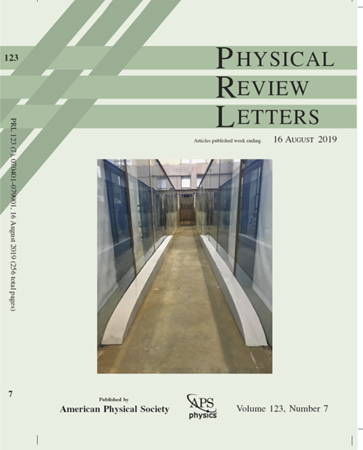Co/Pt界面上Dzyaloshinskii-Moriya相互作用的解剖
IF 8.1
1区 物理与天体物理
Q1 PHYSICS, MULTIDISCIPLINARY
引用次数: 418
摘要
Dzyaloshinskii-Moriya相互作用(DMI)最近被认为在自旋轨道扭矩驱动的快速畴壁动力学和磁Skyrmions的产生中起着至关重要的作用。在这里,我们通过第一性原理计算揭示了Co/Pt双层DMI的主要特征和微观机制。我们发现双分子层的大DMI主要来自于界面Co层的自旋。界面Co自旋之间的DMI从界面向外延伸非常弱,并且与相邻Pt原子层中的自旋-轨道耦合有关。此外,DMI与Pt中的邻近感应磁性之间没有直接关联。这些结果阐明了铁磁和重金属界面上DMI的潜在机制,并有助于优化畴壁和skyrmim基器件的材料组合。本文章由计算机程序翻译,如有差异,请以英文原文为准。
Anatomy of Dzyaloshinskii-Moriya Interaction at Co/Pt Interfaces.
The Dzyaloshinskii-Moriya interaction (DMI) has been recently recognized to play a crucial role in allowing fast domain wall dynamics driven by spin-orbit torques and the generation of magnetic Skyrmions. Here, we unveil the main features and microscopic mechanisms of DMI in Co/Pt bilayers via first principles calculations. We find that the large DMI of the bilayers has a dominant contribution from the spins of the interfacial Co layer. This DMI between the interfacical Co spins extends very weakly away from the interface and is associated with a spin-orbit coupling in the adjacent atomic layer of Pt. Furthermore, no direct correlation is found between DMI and proximity induced magnetism in Pt. These results clarify the underlying mechanisms of DMI at interfaces between ferromagnetic and heavy metals and should help optimizing material combinations for domain wall and Skyrmion-based devices.
求助全文
通过发布文献求助,成功后即可免费获取论文全文。
去求助
来源期刊

Physical review letters
物理-物理:综合
CiteScore
16.50
自引率
7.00%
发文量
2673
审稿时长
2.2 months
期刊介绍:
Physical review letters(PRL)covers the full range of applied, fundamental, and interdisciplinary physics research topics:
General physics, including statistical and quantum mechanics and quantum information
Gravitation, astrophysics, and cosmology
Elementary particles and fields
Nuclear physics
Atomic, molecular, and optical physics
Nonlinear dynamics, fluid dynamics, and classical optics
Plasma and beam physics
Condensed matter and materials physics
Polymers, soft matter, biological, climate and interdisciplinary physics, including networks
 求助内容:
求助内容: 应助结果提醒方式:
应助结果提醒方式:


